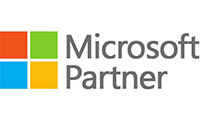A cyber attack is an attempt to disable computers, steal data, or use a breached computer system to launch additional attacks. A cyber attack can be launched by any individual or group using various strategies.
People who carry out cyber attacks are generally regarded as cyber criminals. Often referred to as hackers, they include individuals who act alone, drawing on their computer skills to design and execute malicious attacks. They can also belong to a criminal syndicate, working with other threat actors or hackers to find weaknesses or problems in the computer systems — called vulnerabilities — that can be exploited for criminal gain.
Cybercriminals can use a variety of attack vectors to launch a cyber attack, including malware, phishing, ransomware, and man-in-the-middle attacks. Each of these attacks is made possible by inherent risks and residual risks.
Cybercriminals may steal, alter, or destroy a specified target by hacking into a susceptible system. Cyber threats can range from installing malicious software like wordpress malware or a ransomware attack (such as WannaCry) on a small business to attempting to take down critical infrastructure like a local government or government agency like the FBI or Department of Homeland Security. One common byproduct of a cyber attack is a data breach, where personal data or other sensitive information is exposed.
What are the common types of cyber security attack?
There are many different types of cybersecurity attack out there. Some are more sophisticated and dangerous than others. One of the most common forms of attack is as follows:-
1. Insider threats
Insiders pose a greater risk to companies because they access sensitive information. They know how to exploit weaknesses in IT infrastructure and will likely work directly with the technology used to store corporate data. Insiders account for about 75% of security breaches.
Employees are often the weakest link. Many employees don’t understand what happens to personal information stored on their devices, and many aren’t even aware of the risks posed by social media accounts. This lack of awareness makes it easier for malicious actors to gain unauthorized access to confidential information.
Security professionals must take steps to prevent insider attacks. A recent survey found that less than half of respondents had implemented effective countermeasures. Some common countermeasures include monitoring employee activity, limiting access to privileged accounts, and restricting network traffic.
2. Outsider threats
Cyber attack from outside of the security perimeter: A cyber attack initiated by someone from outside the perimeter of the security perimeter, such as a distributed denial of service (DDoS) attack that is powered by botnets.
3. Backdoor Trojan
A backdoor trojan allows hackers to gain remote access to a system, even if it is locked down. This type of malware can be used to steal data or take complete control of a machine.
Trojans are malicious programs that spread via email attachments, instant messages, or downloaded files. Once installed, they hide quietly in the background, waiting for you to open something suspicious.
They often install themselves silently, either by hiding in emails, emails or downloads or installing themselves automatically upon opening certain types of files.
4. Cross-site scripting (XSS) attack
A cross-site scripting (XSS) attack occurs when an attacker inserts malicious JavaScript code into a legitimate site, application or web service. The attacker can use XSS to perform actions such as stealing data, manipulating forms, redirecting users to malicious sites, etc.
There are three types of XSS attacks: injection reflected and DOM-based.
Injection
An attacker injects malicious code into a vulnerable application via input validation errors.
Reflected
A malicious URL is used to trick a victim into clicking it. When the victim visits the URL, the malicious code executes within the context of the victim’s browser.
DOM-Based
An attacker uses HTML tags to insert malicious code into a document. If the document is loaded into a browser, the code executes.The most common way to execute a cross-site scripting attack is to take advantage of a vulnerability in a web application. The attacker tricks the victim into entering information into a vulnerable field, such as a username or email address. Once the victim submits the information, the attacker changes the value of the username field to something like admin.
Now, anyone who logs into the application will be logged into the attacker’s account. To prevent XSS attacks, developers must validate all incoming data. They should never trust what a visitor provides because it might contain harmful code. Developers should always check whether the data entered by the user is valid and sanitize it accordingly.
5. Denial-of-service (DoS)
A denial-of-service (DOS) attack prevents others from accessing a particular resource. Typically, it involves overwhelming the victim’s system with traffic to make it unusable. A DOS attack might sometimes involve sending a large amount of data over the Internet or flooding a server with useless data. There are many ways to carry one out, including sending large amounts of data over the Internet, crashing the entire Internet, or even crashing the whole world.
6. DNS tunneling
A DNS tunnel is a way to transfer data between two computers without actually connecting them. This makes it possible to use a public Wi-Fi hotspot or even a VPN to access sensitive information such as credit card numbers and passwords.

This technique works because most browsers cache DNS requests. Once you enter a domain name into your browser, it will automatically request the IP address associated with that domain name. However, some people can intercept those requests and change the destination IP address to something else.
The attacker could then send traffic to that new IP address, where it would be routed to the target server.
7. Malware
A malware attack is an attack on an information system utilizing malicious software that is used to attack a system. Among the many types of malware, ransomware, spyware, and Trojans are some of the most common. A wide range of malware can be used by hackers to steal or secretly copy sensitive data, block access to files, interrupt system operation, or even make systems inoperable, depending on the type of malicious code.
Malware can come in various forms, and ransomware is just one example, but there are many others. There is a wide range of uses for malware, from stealing information to defacing or altering web content to permanently destroying a machine. Malware can be used for some purposes for example:-
- In order to steal someone’s identity, you trick them into providing their personal information.
- Data theft from consumer credit cards or other financial information is a serious crime.
- Denial-of-service attacks against other networks are launched by assuming control of multiple computers and launching attacks against them.
- Infecting computers and infecting them with viruses so that they can be used to mine cryptocurrencies such as bitcoins.
There are numerous companies that provide malware removal service these days but in some cases, malware attack has been done on websites. In website malware attack situations prefer to consult a WordPress malware removal service provider. Many companies claim to be an expert in WordPress malware removal, But you must opt for a professional and experienced search combat malware removal service.
Although the malware landscape is constantly evolving, some forms of malware remain the most prevalent, including:
- A botnet is an infection that adds one or more infected systems to one or more botnets, allowing attackers to use them for various purposes.
- In this case, it is a crypto miner that uses the target’s computer to mine cryptocurrency.
- An info stealer is someone who gathers sensitive information from the computer of the target.
- A banking trojan is a piece of software that steals financial and credential information from a banking website.
- Malware that targets mobile devices through apps or SMS messages is known as mobile malware.
8. Phishing
In simple terms, phishing refers to sending fraudulent communications that appear to come from a reputable source, usually through an email. This attack aims to steal or get sensitive information such as credit card numbers and login information from the victim’s computer or install the malware in their system. Cyber threats such as phishing are becoming more and more common.
9. Ransomware
Ransomware is a new type of malware that locks down systems and demands payment for their release. Many people think it is just another virus, but it isn’t. While viruses usually target individual computers, ransomware attacks work across networks. Once infected, the software spreads to other devices like laptops, tablets, and smartphones.

There are many different types of ransomware out there. For example, some encrypt files while others disable systems. Victims are often unaware that the attack has taken place until after the damage is already done.
10. SQL injection
SQL injection attack occurs when attackers insert malicious code through vulnerable web applications. This attack allows hackers to steal information from databases, modify data, delete records, or even shut down a database altogether. A prepared statement is a method where values are substituted before execution. Using parameterized queries prevents this type of attack.
11. Zero-day exploit
A zero-day exploit is a software vulnerability that hasn’t been publicly disclosed yet. This makes it extremely difficult to protect against because there isn’t enough information about how hackers might use it.
Cybersecurity experts say zero days are harder to find than vulnerabilities that have already been patched. Hackers often rely on zero days to infect computers and steal data. They’re usually sold on underground hacking forums like the infamous Hacking Team.
Companies must spend a lot of money to buy up zero-day exploits. But once the cybercriminals sell one, it could cost you millions of dollars to patch the flaw.
The good news is that zero-day attacks don’t target most organizations. However, some companies do pay hackers who discover such flaws.
12. Man-in-the-Middle (MitM) Attacks
A man-in-the-middle (MITM) attack occurs when someone inserts themselves into communications between computers and networks. Hackers can eavesdrop, steal credit card numbers and even manipulate transactions. In some cases, hackers can use MITMs to intercept data sent via secure channels such as SSL/TLS encryption.

This attack is often performed over insecure wireless connections like the ones made available through free hotspot Wi-Fi access points found in coffee shops, airports and hotels. These attacks are typically easy to perform because most people don’t realize how vulnerable their Internet connection is.
13. Zero-day Exploit
A zero-day exploit is a cyberattack where hackers use a previously unknown vulnerability to break into computers and steal sensitive information. Zero days are dangerous because they give attackers access to systems without having to go through the process of finding out how to exploit them. Sometimes, zero days are sold publicly online for as little as $20,000.
There are many ways to identify whether a computer system is vulnerable to a zero-day exploit. For example, automated tools, manual scans, intrusion detection systems, network monitoring tools and threat actor activity can help identify potential threats.
The most effective way to prevent zero-day attacks is to patch software immediately after discovering a vulnerability. However, there are several reasons why companies don’t always do this. One reason is that fixing bugs takes time, money and resources. Another reason is that it’s hard to know what software you have installed on your network. This makes it difficult to determine which programs might be affected.
How to Detect Cyber Attack?
Cyber threats may arise either as a result of residual risks or as a result of inherent risks. Several countermeasures can be implemented at the organizational, procedural, and technical levels to detect cyber attacks.
Following is a list of examples of organizational, procedural, and technical countermeasures that can be taken:
- Organizational countermeasure: Providing cybersecurity training to your organization’s employees at all levels is a great way to combat cybercrime.
- Procedure countermeasure: Third-party vendors must complete vendor assessment questionnaires as a procedure countermeasure.
- As a technical countermeasure, install antivirus programs, antimalware programs, anti spyware programs, and network intrusion detection systems (NIDS) on all computers and monitor your vendors and your organization for any data leaks.
Cybersecurity is an ongoing process. You cannot stop it; you must prepare yourself to deal with it. Organizations must constantly monitor their networks, update software and hardware, secure data, and keep up with the latest threats. This requires constant vigilance.
How to mitigate against Cyber Attack?
Cyber security is about preventing malicious activity from happening in the first place rather than trying to clean up afterwards. This requires a proactive approach to cybersecurity that involves prevention, detection, response, recovery, and mitigation.
A breach doesn’t necessarily mean your system isn’t secure. Many breaches are due to human error, such as employees clicking on phishing emails. These incidents don’t necessarily indicate that you’re vulnerable; however, they show that you could be.
The best way to prevent a breach is to implement strong passwords and multifactor authentication, use encryption where possible, and keep software updated. You can also ensure that your systems are patched regularly and monitor network traffic to identify potential threats.
In addition to implementing basic measures, some specialized tools can help detect and respond to malware and ransomware. For example, antivirus programs like McAfee LiveSafe can scan files and email attachments for viruses and block them before they reach your computer.
Similarly, endpoint protection products like Symantec Endpoint Protection can protect devices from malware without requiring constant monitoring.
Finally, recovering from a breach requires planning. If you’ve been breached, you’ll want to change your password immediately, wipe out any sensitive information, and contact law enforcement and your IT provider.
How to prevent Cyber Attack?

Cybersecurity is an ever-evolving challenge. Numerous threats exist, including phishing emails, ransomware, malware, and denial-of-service attacks. These attacks can destroy data, steal money, and even shut down entire businesses.
There are a few security tools that organizations commonly use to prevent cyber attacks from taking place. There is no doubt that tools are insufficient to prevent attacks—to manage and effectively use the tools and mitigate threats effectively, every organization needs to train IT and security staff or outsourced security services.
- Web Application Firewall (WAF)
WAFs analyze HTTP requests and detect suspected malicious traffic to protect web applications. The traffic may be inbound, such as a malicious user trying to inject code, or outbound, such as malware communicating with the command and control center.
By blocking malicious traffic before it reaches a web application, WAFs can prevent attackers from exploiting many common vulnerabilities – even if the underlying application has not been updated. As a complement to traditional firewalls and intrusion detection systems (IDS), it protects applications from attackers at the application layer.
- DDoS Protection
DDoS protection solutions can protect networks and servers from denial-of-service attacks. The organization uses dedicated network equipment on-premises or as a cloud-based service. Due to their ability to scale on demand, cloud-based services can deflect large DDoS attacks involving millions of bots.

A DDoS protection system or service can detect a DDoS attack pattern and distinguish legitimate traffic from malicious traffic. When it detects an attack, it applies a “scrubbing” process to traffic packets, inspecting them for malicious content and dropping them. During this time, legitimate traffic is routed to the target system to prevent service interruptions.
- Bot Protection
Bots generate the majority of Internet traffic. Websites are heavily loaded by bots, which consume system resources. Bots can perform malicious and beneficial activities (such as indexing websites for search engines). Some ways bots can be used are DDoS attacks, scraping content from websites, automated web application attacks, and spreading spam and malware.
In a bot protection system, bad bots are detected and blocked, while legitimate bots can perform tasks like search indexing, testing, and performance monitoring. Detecting behavior patterns that might indicate a malicious bot is maintained in an extensive database of known bot sources.
- Cloud Security
Cloud computing is used by almost all organizations today to manage infrastructure, applications, and data. A cloud system is especially vulnerable to cyber threats as it is commonly exposed to public networks and suffers from low visibility because it is highly dynamic and runs outside a corporate network.
Users can secure their data and workloads using built-in security tools provided by cloud providers. Despite this, first-party cloud security tools are limited, and there is no guarantee they are being used correctly and that all cloud resources are protected. Many organizations use dedicated cloud security solutions to protect sensitive assets deployed in the cloud.
- Database Protection
Databases typically hold sensitive, mission-critical information, making them prime targets for attackers. To secure databases, database servers must be hardened, access control and encryption must be appropriately configured, and malicious activity must be monitored.

Organizations can improve database security by implementing database security solutions. Using them can prevent issues like excessive privileges, unpatched vulnerabilities in database engines, unprotected sensitive data, and database injections.
- API Security
In modern applications, application programming interfaces (APIs) communicate with other applications, obtain data, or request services. APIs are used to integrate systems within an organization and to contact and receive data from third-party systems.
APIs, especially public APIs accessed over the Internet, are vulnerable to attacks. Due to their high structure and documentation, APIs are easy for attackers to understand and manipulate. The security of many APIs is not high enough, they may be weakly authenticated or vulnerable to attacks like cross-site scripting (XSS), SQL injection, and man-in-the-middle (MitM).
API security includes:
- Multi-Factor authentication (MFA).
- Secure authentication tokens.
- Encryption of data in transit.
- Sanitization of user inputs to prevent injection attacks.
Using API solutions, these security controls can be enforced centrally.
- Threat Intelligence
Many modern security tools are supported by threat intelligence, which operates in the background. In addition to being used directly by security teams, it is also used to investigate incidents. A threat intelligence database contains structured information from several sources about threat actors, attack tactics, techniques, procedures, and known vulnerabilities.
With threat intelligence solutions, organizations can quickly identify and understand attacks, understand the threat actor’s motivation and mode of operation, and design an appropriate response based on indicators of compromise (IOCs), which are gathered from a wide variety of feeds and information sources.
Cyber Attack FAQs
Companies help to protect organizations from cyberattacks. We help detect and prevent threats before they do widespread damage. Our products include a web application firewall, network intrusion prevention system, threat detection and response, email gateway, and endpoint protection.
Why should I care about Cyber Attacks?
Cyberattacks are increasing exponentially every year. In fact, according to Verizon’s 2018 Data Breach Investigations Report, cybercrime costs companies $3 trillion annually. And while it seems like there’s no end in sight, you don’t have to worry—you can take steps now to protect yourself against future attacks.
In this video, we’ll discuss why you should care about cybersecurity, what threats exist, how to avoid becoming a victim, and how to increase your chances of being protected.
How often do Cyber Attacks occur?
Cyber attacks are becoming more common every day. They can take place anywhere, anytime, and affect anyone. Cybersecurity experts say there are three main types of cyber attacks:
- Malware – An unauthorized program to steal personal information or disrupt computer operations.
- Phishing – A scam where someone pretends to be another person online, such as a bank representative or a friend.
- Social engineering – When someone tricks you into giving up sensitive information.
Why do people launch Cyber Attacks?
Cyberattacks are increasing yearly because hackers want to destroy businesses and steal information. They are targeting companies and individuals alike, and it doesn’t matter whether you’re small or large. The biggest targets are usually smaller organizations.
Ransomware is the most popular form of malware today. This malicious software locks down systems and demands money for unlocking access. Many types of ransomware exist, including Cryptowall, CryptoLocker, Locky, WannaCry, NotPetya, Cerber, Petya, Bad Rabbit, TeslaCrypt, SamSam, Neutrino, NanoCore, and Chimera. These threats are constantly evolving and changing, making it difficult to protect against them.
What are the types of Cyber Attacks?
Cybersecurity experts define a cyberattack as “an act of unauthorized access to computer systems”. There are three main categories of attacks: malware, phishing, and denial of service.
Malware includes viruses, worms, trojan horses, spyware, adware, rootkits, keyloggers, ransomware, dialers, and botnets. Malicious software can affect almost every aspect of computing, including personal information, financial transactions, intellectual property, communications, and government operations.
Phishing involves sending emails to unsuspecting recipients that contain fake messages or links that lead to malicious sites. Phishers use social engineering tactics such as impersonating trusted sources to trick victims into providing sensitive information.
Denial of Service involves flooding a system with requests overloading it, making it unavailable to legitimate users. This type of attack is used to take control of a server or web application without authorization.
Trojans are viruses that infect computers while they are being installed. Once the Trojan is installed, it hides in memory and waits for commands from hackers.
Worms are self-replicating pieces of software that spread across networks. Worms can be sent via email or downloaded from infected websites. In some cases, worms can even propagate themselves across the Internet.
Ransomware encrypts files on a victim’s device and demands payment to decrypt them. Ransomware
How many Cyber Attacks are there per day?
There are many different ways hackers attempt to break into computers. Some methods include phishing emails, malware, social engineering, spear phishing, and even old-fashioned hacking techniques like brute force.
Companies must keep an eye out for unusual activity and report any breaches promptly. A breach could mean anything from a stolen credit card number to a complete data dump of customer records.
Hackers will try to steal information such as names, addresses, phone numbers, email addresses, passwords, Social Security numbers, financial information, intellectual property, and confidential documents.
It’s always better to have a backup to help you out from this harmful attacks or if your website got harmed with attack. You will always have an expert to help you out from the Cyber Attack.










